As you check your water softener to see if it is time to add salt to your brine tank, you notice that the brine tank is full of water. What should you do and why is your water softener salt/brine tank full of water?
A water softener salt/brine tank could be full of water because of a clogged brine injector/venturi, a restriction of water flow through the water softener, a loss of draw from the water softener salt/brine tank, or your water softener salt dose setting is very high.
If your water softener salt/brine tank is full of water, there are several probable causes and the most likely problems are quite easy to fix.
Here’s What We Will Be Covering:
- What Causes A Water Softener To Fill With Water?
- How To Remedy What Is Causing Your Water Softener To Fill With Water.
- Should Your Water Softener Be Filled With Water?
- Can A Water Softener Overflow?
- Do I Need To Remove The Extra Water From The Water Softener?
- Do I Need To Have My Water Softener Serviced When It Is Full Of Water?
What Causes A Water Softener To Fill With Water?
I have listed the most common reasons for a water softener to be full of water from most common to least common so I recommend that you check for them in the order that they are listed.
- A Clogged Injector/Venturi
- A Kinked, Clogged, Or Pinched Drain Line
- A Kinked Or Clogged Brine Tube
- A Cracked/Leaking Brine Tube
- A Loose/Cracked/Leaking Brine Tube Fitting
- A Brine Tube Salt Or Debris Blockage
- A Sticking Brine Valve
- Increased Water Hardness (Salt Dosage) Setting On Water Softener
How To Fix Causes For A Water Softener Full Of Water
1. A Clogged Injector/Venturi –

I have found that a clogged injector/venturi is the most common cause of a water softener becoming full of water.
The injector/venturi of a water softener creates the draw that draws the brine from a water softener brine (salt) tank.
If the injector/venturi of a water softener becomes clogged or the openings of an injector/venturi become blocked by debris, the water softener will not be able to draw the brine from the brine tank correctly.
If some of the brine is left behind in the brine tank after the water softener regenerates because the injector/venturi could not create a strong draw, the water level can be higher in the brine tank because the water softener will add the normal amount of water to the brine tank on top of the leftover brine.
In other words, the water softener will always add the same amount of water to the brine tank and any leftover brine in the tank will add to the amount of water in the brine tank.
How To Clean A Water Softener Injector/Venturi –
Cleaning the injector/venturi with soap and water or an iron remover if there is iron build-up or mild water softener resin cleaner will clear the openings of the injector/venturi so that it can create a strong enough draw to use all of the brine from the brine tank.
Most of the time you can simply clean a water softener injector/venturi with soap and water.
Check out this quick video on how to clean a venturi on a very common water softener.
If your water contains iron, simple soap and water may not be enough. You may need to use an iron remover to get your water softener injector/venturi clean.
Simply dissolve some Iron remover in water and let the injector/venturi soak for a few minutes and then rinse in clean water.
A water softener injector/venturi is often located behind a cap that is located on the top, side, or rear of the water softener. By bypassing or shutting off your water to your water softener, you can carefully remove and clean or replace the injector/venturi to solve your water softener salt/brine tank full of water problem.
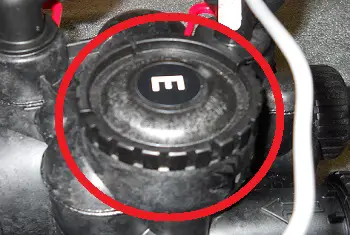
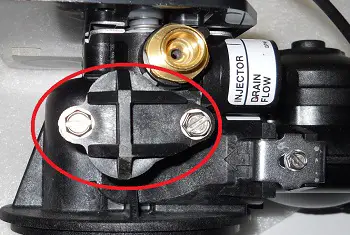
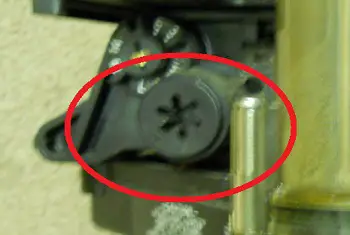
2. A Kinked, Clogged, Or Pinched Drain Line –
Although not as common as a clogged injector/venturi, a kinked, clogged, or pinched water softener drain line will not allow a water softener to draw the brine from its brine tank.
If water is not allowed to flow smoothly out of the water softener drain line, the injector/venturi will not be able to create a draw in which to draw the existing brine from the brine tank.
Then when the water softener adds the preset amount of water into the brine tank, the leftover brine will add to the level of water in the water softener brine tank.
How to fix a Kinked, Clogged, Or Pinched Drain Line –
Make sure that your water softener drain line does not make any sharp turns that could result in a kinked line. A sagging (drooping) drain line can accumulate dirt and debris which could develop into a blockage over time.
If possible, have your water softener drain line at a slight decline going away from the water softener to the drain to ensure that no water or debris will remain in the line once the water softener regeneration is complete.
3. A Kinked Or Clogged Brine Tube –
The brine tube of a water softener can easily get kinked or pinched if items surrounding your water softener get moved around and pushed into it.
If brine from a water softener can’t be drawn through the brine tube, brine can be left over inside of the brine tank which can add to the overall water level of water in the water softener brine tank once the brine tank is refilled.
How To Fix A Kinked Or Clogged Brine Tube –
Make sure that the brine tube of your water softener is clear of obstacles that could press against it. A curved brine tube is fine, but a kinked brine tube will cause a decrease in water flow.

4. A Cracked Brine Tube –
The brine tube of a water softener is generally made of plastic which can develop a crack if it becomes brittle over time or struck by an object.
Although a cracked brine tube may not leak, it can allow air to be drawn into the tube while the water softener is attempting to draw the brine from the water softener brine tank.
Air that is being drawn into a brine tube can reduce the strength of the draw which can mean not all of the brine will be drawn from the brine tank.
Brine that is left behind due to a cracked brine tube drawing air in addition to the brine will add to the level of the water in the brine tank when the water softener refills the brine tank.
A crack in the brine tube of a water softener can also allow a slow drip of water from the brine tube to flow down the outside of the tube and into the brine tank.
This slow leak may take some time to make a difference in the overall level of water in the brine tank, but as the crack gets bigger, the drip will add extra water to the brine tank faster.
Check your brine tube for cracks by drying the outside thoroughly and then run a dry paper towel over the entire tube and check for damp spots on the paper towel.
How To Fix A Cracked Brine Tube –
If you find that your water softener brine tube is cracked, you can easily replace it.
A standard water softener brine tube is a ⅜” semi-stiff plastic tube that can be found in most hardware stores. Just purchase the correct length that you need and you can usually reuse the connectors from the old brine tube.
5. A Leaking Brine Tube Fitting –
A Leaking brine tube fitting can act much like a crack in a brine tube and can allow reduced draw because of air being drawn into the tube leaving brine behind in the brine tank or water leaking from a crack in the brine tube can leak water into the brine tank.
Check that your brine tube fittings are snug but do not overtighten them as they are usually made of plastic that can crack when over-tightened.
How To Fix A Leaking Brine Tube Fitting –
If you discover a leaking brine tube fitting on your water softener that is causing your water softener to fill with water, check your local hardware store or contact the manufacturer of your water softener for help in replacing the fitting.
6. A Brine Tube Salt Or Debris Blockage –
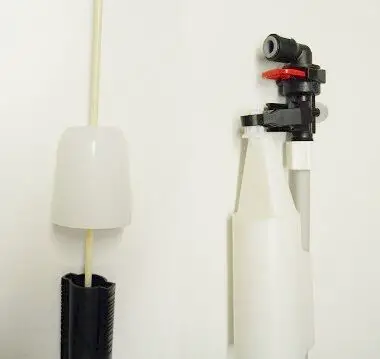
Although the salt that you add to your water softener brine tank may appear to be very clean and pure, there are often small amounts of debris in the salt that can make its way into the openings of your water softener brine tube.
Even small pieces of the salt itself can get lodged in the fine slots in a water softener’s brine tube, restricting the brine from being drawn into the water softener.
A small amount of blockage in a water softener’s brine tube will generally not be enough to affect the amount of water in a water softener’s brine tank.
But over time, an increase in blockage can prevent all of the brine from being drawn from the brine tank which means that the level of the water in the brine tank will be higher than it needs to be when the water softener adds water back into the brine tank.
How To Fix A Brine Tube Salt Or Debris Blockage –
The simplest way to clear a brine tube blockage is to pour some very warm (BUT NOT BOILING) water down the brine well containing the brine tube to dissolve salt build-up and loosen the blockage.
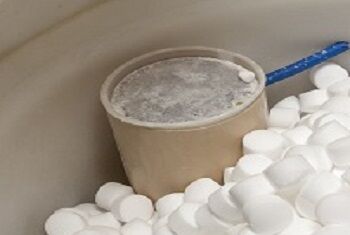
After a few minutes, carefully remove the brine tube from the brine well and use clean water to remove the remaining blockage.
7. A Sticking Brine Valve –
The brine valve of a water softener opens for a pre-programmed length of time to allow water to into a water softener’s salt/brine tank and closes once the programmed amount of water has been added.
A brine valve also opens to allow the brine from the brine tank to flow into the water softener’s resin tank during the regeneration process.
If a brine valve sticks in either the (Brine Fill) or the (Brine Draw) mode, it can add too much water to the salt/brine tank, not draw all of the brine from the salt/brine tank, or both.
Although a sticking brine valve is not common, it is a good idea to check for salt crusting on the valve which can cause the valve to have difficulty opening or sealing properly.
How To Fix A Sticking Brine Valve –
If you see any white crusting on your water softener brine valve, try removing the crust with a clean towel or sponge and water.
If the brine valve still fails to open and close correctly, you may need to replace the valve.
8. Increased Water Hardsness Setting On Water Softener –
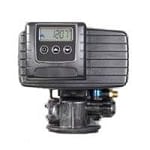
Sometimes a power outage, a computer malfunction, or someone pressing the wrong buttons on a water softener can increase the hardness setting on the water softener.
Raising the hardness setting on a water softener will tell the water softener’s computer to add more water to the salt/brine tank to create more brine to be used for the water softener resin regeneration process.
Although a slight increase in the hardness setting will have little effect on the amount of water that is in the salt/brine tank, a large increase in the hardness setting can cause the salt/brine tank to be full of water.
How To Fix Increased Water Hardsness Setting On Water Softener –
In order to get your water softener hardness setting correct, you should first test your water hardness and test your water for iron to determine the correct hardness that should be programmed into your water softener.
Check out my article “What Should Your Water Softener Hardness Be Set At“
Paul Burkhardt
Follow the instructions in your water softener owner’s manual to set your water softener hardness level and you should see the water level in your water softener’s salt/brine tank go back to its correct level.
Should My Water Softener Be Filled With Water?
In cases where a small capacity water softener is being used to soften water where the water to be treated contains a VERY HIGH amount of hardness, the water softener resin will need a LARGE dose of sodium from the brine tank to regenerate the resin.
More hardness in the water to be softened means more salt is needed to remove the hardness that has been removed from the water softener resin or the water softener will need to regenerate more often with less salt.
When water conservation is a concern, it could be more beneficial to regenerate a water softener with a larger dose of salt which means the water level in the brine/salt tank will need to be higher so it can dissolve more salt to make more brine.
Can A Water Softener Overflow?
Most water softeners use a brine float shut-off in the brine tube that will shut off the water flowing into the water softener salt/brine tank if the water level gets too high.
The salt/brine tank may become full of water but the brine float shut-off will prevent the tank from overflowing.
See my article: Why Is My Water Softener Overflowing?
Paul Burkhardt
Do I Need To Remove The Extra Water From The Water Softener?
Generally, there is no need to remove the extra water from a water softener salt/brine tank that is full of water.
Once you have identified the cause of the water softener salt/brine tank being full of water, the water level in the salt/brine tank will return to normal.
Do I Need To Have My Water Softener Serviced When It Is Full Of Water?
A water softener should be serviced occasionally to ensure that it is working properly.
If your water softener salt/brine tank is full of water, it has most likely been a while since it has been properly serviced, and getting it checked out by a water treatment professional would be a good idea.
To Sum Up!
A water softener salt/brine tank that is full of water is most likely due to a clogged injector/venturi in the water softener that creates a draw to draw the brine from the water softener salt/brine tank.
A water softener being full of water can also be due to a restriction in water flow or loss of draw in the drain line or brine tube assembly.
Cleaning or replacing the injector/venturi in your water softener and making sure that water and brine are flowing freely through your water softener should solve your water softener salt/brine tank full of water issue.



Great article and very informative. I’ve got a Morton m-34 softener. I cleaned and inspected the nozzle, Venturi and brine assembly. The unit will draw trough the resin tank properly during regeneration and cycles properly when tested. I continue to have high water levels in the brine tank. I unplugged the unit while leaving the softener in use and the water level increases 1-2 inches per 24 hours. It appears that the valve assembly is leaking water into the brine tank. Is this a possibility?
Hello Jon and thank you for the question.
Yes, this is certainly possible.
A leaking seal in the water softener’s control valve or the brine valve can allow a slow leak of water to flow through the brine tube and into the brine tank.
I have even seen a slow leak of water travel down the outside of the brine tube, slowly adding water to the brine tank.
A very slow amount of water leaking into the brine tank may not be strong enough to trigger the brine float to seal properly so the brine tank could continue to fill above the level of the brine float shut off.
I suggest checking the brine tube for cracks that could allow water to seep from the brine tube and travel down the tube into the brine tank and check that the venturi seal is clean and sealing properly.
I hope this was helpful.
Paul